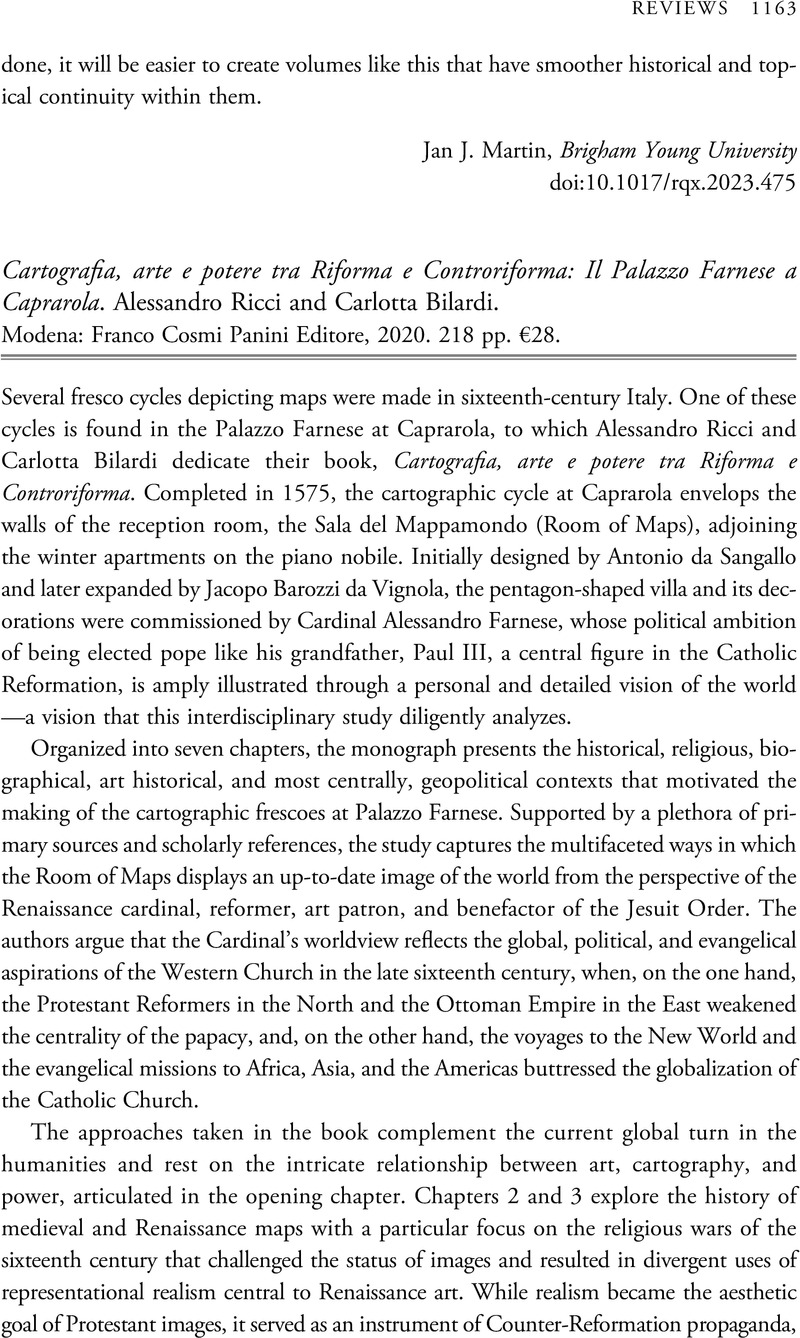No CrossRef data available.
Article contents
Cartografia, arte e potere tra Riforma e Controriforma: Il Palazzo Farnese a Caprarola. Alessandro Ricci and Carlotta Bilardi. Modena: Franco Cosmi Panini Editore, 2020. 218 pp. €28.
Review products
Cartografia, arte e potere tra Riforma e Controriforma: Il Palazzo Farnese a Caprarola. Alessandro Ricci and Carlotta Bilardi. Modena: Franco Cosmi Panini Editore, 2020. 218 pp. €28.
Published online by Cambridge University Press: 15 November 2023
Abstract
An abstract is not available for this content so a preview has been provided. Please use the Get access link above for information on how to access this content.

- Type
- Review
- Information
- Copyright
- Copyright © The Author(s), 2023. Published by the Renaissance Society of America



